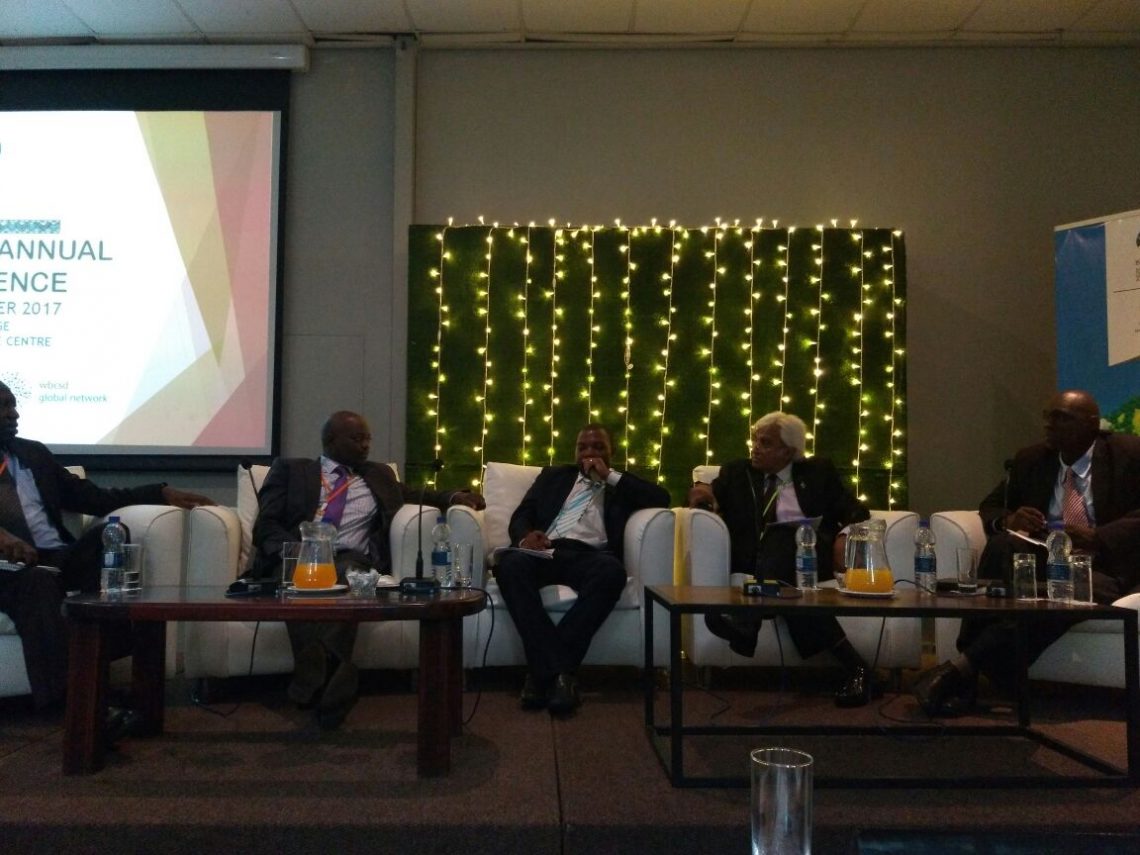By Byron Mutingwende and Patricia Mashiri
Zimbabwe is moving towards embracing a green economy through harnessing of the Sustainable Development Goals (SDGs0 for resource efficient and low carbon development.
Speaking at the Business Council for Sustainable Development in Zimbabwe (BCSDZ) annual conference at Cresta Lodge in Harare, Cecilia Ndwabe, the manager is in charge of the safety, health environment, and quality assurance (SHEQ) at Central African Cables (CAFCA) said the Energy Management System ISO 50001 has been a tool for resource efficiency and green manufacturing excellence at her organisation.
Ndwabe said at CAFCA there are integrated management systems in place, comprising of Environmental, Quality, Occupational Health and Safety and Energy.
“We have purchased energy saving equipment with Energy Rating Labels. On top of that, we have also upgraded our electronics by installing electronic drives on production machines. CAFCA has moved from non-energy saving lighting to Light-emitting diode (LED). This saves energy. Over and above that, the organization has decentralised of one of the standby compressors to run it during weekends or holidays when plant loading is low. We have also eliminated the use of gas at the scrap cable incinerator to recover copper through the use of cable polyethylene coating as a fuel,” Ndwabe added.
The company is also improving the smelting and casting processes at the furnace to improve production efficiencies. It also installed electronic devices for cooling tower fans. This reduced energy consumption. The average consumption per month for 2 x 7.5kw fans prior to improvements was 4500kWh. It is now reduced to an average of 3000kWh after installing electronic drives.
Johannes Chigwada, the President of the International Energy Forum (East African Region Acting Director of Energy) alluded to the importance of Cassava Sustainability Initiatives in the value chain and Microalgae Applications in waste management.
“The establishment of cassava automobile processing unit (AMPU) has been able to overcome the disadvantages of the traditional large-scale central processing plant while at the same time maintaining the high quality required in cassava flour. This has led to opening up of new national and international markets. The rationale behind the unit is “if the farmer cannot come to the factory, let the factory come to the farmer.” The AMPU will enable the project to process cassava where the farmers are and transport the cake to the factory. The AMPU creates a stable demand for cassava farmers. Self-supporting in energy requirements, the AMPU can move within the farmers’ mobility range of about 20 km,” Chigwada said.
Farai Mpfunya, the Executive Director of the Culture Fund of Zimbabwe Trust said culture contributes immensely in national and international development policies.
“This leads to establishment of international standard-setting instruments and demonstration tools, such as cultural statistics, inventories, and mapping of cultural resources, as well as to an increasing focus on cultural industries.
“Th 2001 UNESCO’s Universal Declaration on Cultural Diversity recognised culture and cultural diversity as an ethical imperative and as vital to achieving economic and social development. There is a need to integrate culture into green-sustainable urban development policies such as UNESCO Creative City Status,” Mupfunya said.
Ndivhuho Raphulu, the Director of the National Cleaner Production Centre of South Africa said industrial symbiosis aims to find reuse and recycling solutions for waste materials to divert waste from landfill, while at the same time creating real businesses benefits for members.
“An estimated 90% of waste generated is disposed off to landfills at poorly designed and operated dumpsites. On the other hand, an estimated 60,000 – 90,000 informal waste pickers in South Africa earn a livelihood through collection of recyclables either from landfills or at kerbside. According to Packaging SA (2016), 46% of packaging waste is still disposed of to landfill while an estimated 65% of organic waste and 100% of industrial biomass is disposed off to landfill (DEA, 2012). An estimated 30% of the food we produce (local agricultural production) goes to waste (CSIR, 2013). An estimated 60-70% of South Africa’s general waste could be diverted away from landfill into recycling or recovery,” Raphulu said.
He added that the system promotes development of circular systems within the industrial sector, uses the principles of the waste hierarchy and creates mutual economic, environmental and social benefits for companies involved.






